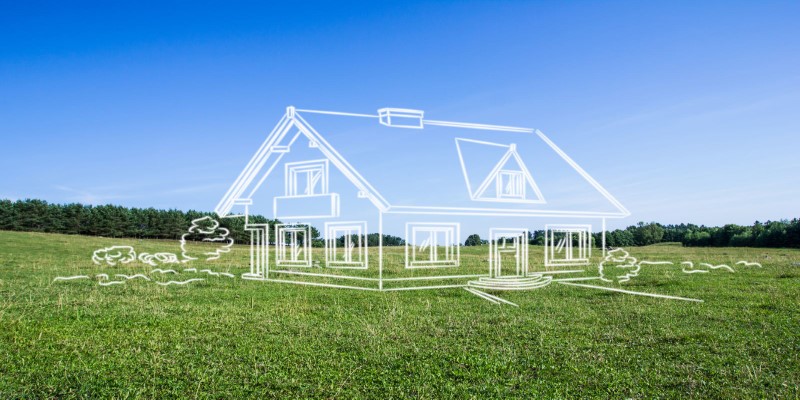Buying land might seem straightforward. You find a piece of earth you love, you pay for it, and that’s that. But when you don’t have all the cash ready to hand over, things take a more complicated turn. Enter land loans. These are not quite like the mortgage loans people use to buy homes. They have their own set of rules, expectations, and quirks. If you’ve ever thought about buying land for your dream house or maybe for a small farm or future investment, understanding land loans is not just helpful—it’s essential. Let’s break it down in plain terms.
What Exactly Is a Land Loan?
A land loan is money borrowed to purchase a plot of land. That land might be for future construction, for commercial purposes, or even to sit untouched for a while. The key point here is that there's no house involved—not yet. That absence changes everything.
Unlike home loans, which lenders are generally comfortable giving because there’s already a structure standing, land loans come with more uncertainty. What if the borrower never builds? What if it’s hard to resell? Because of that, these loans often come with stricter requirements and higher interest rates. The risk to the lender is higher, and they make up for that in their terms.
There are a few types of land loans, and each has its own conditions depending on how the land is zoned and what your plans are. But before we get into types, let’s talk about the hurdles that come with them.
Why Land Loans Are Considered Riskier
When a bank evaluates a land loan application, they're not just looking at your credit score. They're also thinking about the land itself: Is it accessible? Does it have utilities? What's the zoning? These questions aren't small because they influence whether the land can realistically be developed or sold if you stop paying back the loan.
Here’s what typically raises red flags for lenders:
- Raw land: This is land in its natural state—no electricity, water, sewer, or roads. Because it requires the most effort and expense to develop, it’s also the hardest to finance.
- Lack of collateral: A house is a physical asset. If someone defaults on a home loan, the bank can take the house. However, if the land is undeveloped, the resale value can be unpredictable.
- Market unpredictability: The value of land doesn't always increase in a neat, upward trend. Some plots sit idle for years without appreciation, especially if they're in rural or less desirable locations.
Because of these risks, lenders typically ask for larger down payments—often 20% to 50%, depending on the loan type and location. Interest rates are also higher compared to traditional home loans, and the repayment terms might be shorter.
Types of Land Loans
The type of land you’re buying shapes the type of loan you’ll need. Lenders categorize these loans based on how developed or undeveloped the land is. Here’s a closer look.
1. Raw Land Loan

This is for land that's completely undeveloped. No utilities, no roads, and often not even cleared. Because raw land is essentially a blank slate, it's also the riskiest type to finance.
- Down payment: Usually the highest—expect 35% or more.
- Interest rate: Higher than any other land loan.
- What lenders want: A solid credit score, a very clear plan for development, and possibly additional collateral.
2. Unimproved Land Loan
Unimproved land may have some infrastructure, such as a dirt road or partial utility access, but it's still not ready for construction. It sits between raw and improved land.
- Down payment: Generally around 20% to 30%.
- Interest rate: Lower than raw land but still more than a typical home loan.
- What lenders want: A reasonable plan for improvement and timelines that show when construction will begin.
3. Improved Land Loan

This is land that’s ready to build on. Roads are in place, utilities are accessible, and zoning supports your intended use. Naturally, this type of loan is the easiest to get.
- Down payment: Often starts around 15% to 25%.
- Interest rate: Closer to home loan rates, especially if development is starting soon.
- What lenders want: Your building schedule, permits, and the builder’s credentials.
Steps to Get a Land Loan
Now that you've got the big picture let's walk through how to actually get one. If you think the process is similar to applying for a home loan—you’re not wrong, but there are extra steps.
Step 1: Know the Land Type
Before applying, you need to know what you're dealing with. Raw, unimproved, or improved? This influences your eligibility, the loan terms, and the documentation you'll need. Don’t skip this step—it shapes everything that follows.
Step 2: Check Your Credit and Finances
Lenders scrutinize land loan applications more than traditional ones. A good credit score (often 680 or higher) is essential. You’ll also need proof of stable income and a strong debt-to-income ratio.
Be ready to provide tax returns, bank statements, and documentation of other assets. Because of the higher risk, lenders want more reassurance that you can handle the loan.
Step 3: Save a Large Down Payment
Land loans require more upfront money. Depending on the type, you could be looking at 20% to 50% or even higher. Saving aggressively before applying will not only increase your chances of approval but might also get you better loan terms.
Step 4: Get the Land Surveyed
Lenders want details. A professional land survey provides clear boundaries, verifies the size, and checks for zoning restrictions or easements. This report becomes part of your application and assures the lender that there are no hidden issues.
Step 5: Show Your Plans
If you’re planning to build, your lender will expect a building schedule, development plans, and possibly contractor quotes. Even if construction is a few years away, offering a rough timeline can make your application stronger.
Step 6: Compare Lenders
Not all lenders offer land loans. Start with credit unions and local banks—they’re often more familiar with the area and more open to funding these types of purchases. Ask about interest rates, down payment requirements, and repayment terms.
Step 7: Apply and Wait for Approval
Once you have all documents ready—credit records, income proof, land survey, down payment—you’ll submit your application. The approval time can vary, but having everything in order reduces delays.
Final Thoughts
Land loans are a very different animal compared to traditional home loans. The lack of a structure adds risk, and lenders respond with stricter terms. But that doesn’t make them inaccessible. With the right preparation—solid credit, a large down payment, and clear plans—you can absolutely finance a piece of land for your future home, business, or investment. Just walk into it knowing what to expect, and the process becomes far more manageable.












